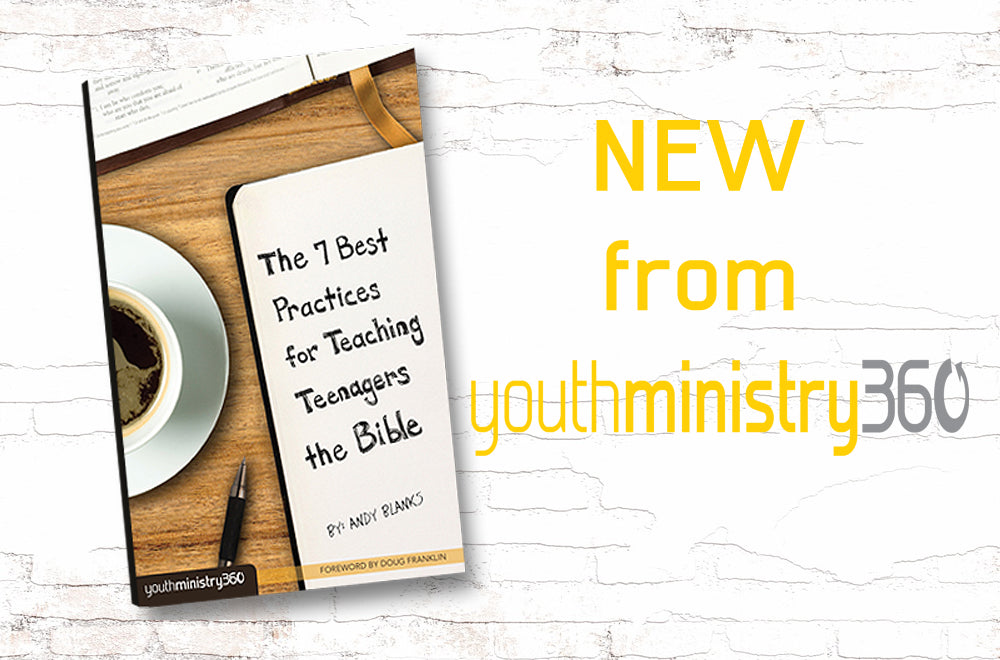
Snapshots From “The 7 Best Practices For Teaching Teenagers The Bible,” Part 1
As you may or may not know, we’ve just released a new resource entitled The 7 Best Practices For Teaching Teenagers The Bible. We’re really pleased with how it turned out. It’s solid and practical, and should be a great resource for both experienced and beginning youth workers. This is the first of a few posts over the next few weeks where we’ll pull out one of the Best Practices and give it a little breathing room. In this post, we’ll take a super quick look at the first Best Practice. Best Practice #1 is simply this:
Sounds simple? It is. But let’s face it: how many of us struggle with regularly having meaningful interactions with God through encountering Him in the Bible? If you’re like a lot of youth workers, this is a real issue for you. For many of us, as our lives have grown more complex and the demands of each day more intense, we have begun to think of our time with God in His Word as a chore. A ritual. And we’ve begun to simply go through the motions. Or, more realistically, we’ve stopped doing it. In this first section of 7 Best Practices, we give quite a few practical strategies and concepts to help you rekindle your fire for seeking God. I won’t give them all away here—that’s what the book is for ☺—but I will pass along one specific practice that has been very helpful to me over the years.
Praying Through The Psalms
Biblical scholars tell us that the majority of the psalms were used by the first Christ-followers in corporate worship. And of course, they are still used that way today. But for me, the psalms give an amazing voice to my relationship with God. When I find myself lacking that emotional, heart-driven engagement with God, I turn to the psalms and use them as prayers to God. Take, for instance, Psalm 100. One way to read this is to mine it for cultural context, looking at the original language, and so on. I call this engaging with your head. It’s a vital part of learning and following God’s Word. But, engaging with our hearts is vitally important. So, what does it feel like to personalize the psalm as a dialogue with God? What if instead of reading Psalm 100:3 silently, to yourself, like this:
You personalized it and voiced it as a prayer, like this:
To some of you this might feel a little weird, a little out there, and that’s fine. I get it. But, the Bible was never intended to be dry, safe, and emotionless. It was meant to inspire us, to change us, and to motivate us to both seek God and to seek the expansion of His Kingdom on this earth. Praying through the psalms is a powerful way to see Scripture in this light. This is just a small sample of one of the 7 Best Practices. I hope it was helpful and I hope you can get a taste of the heart and purpose of the book.
 To get more info on 7 Best Practices, including a sample and ordering information, simply CLICK HERE.
To get more info on 7 Best Practices, including a sample and ordering information, simply CLICK HERE.
And as always, if you have any questions, please don't hesitate to email us by clicking here. Or, feel free to call us at 888.96.ym360. We're happy to help and look forward to talking with you.




Leave a comment